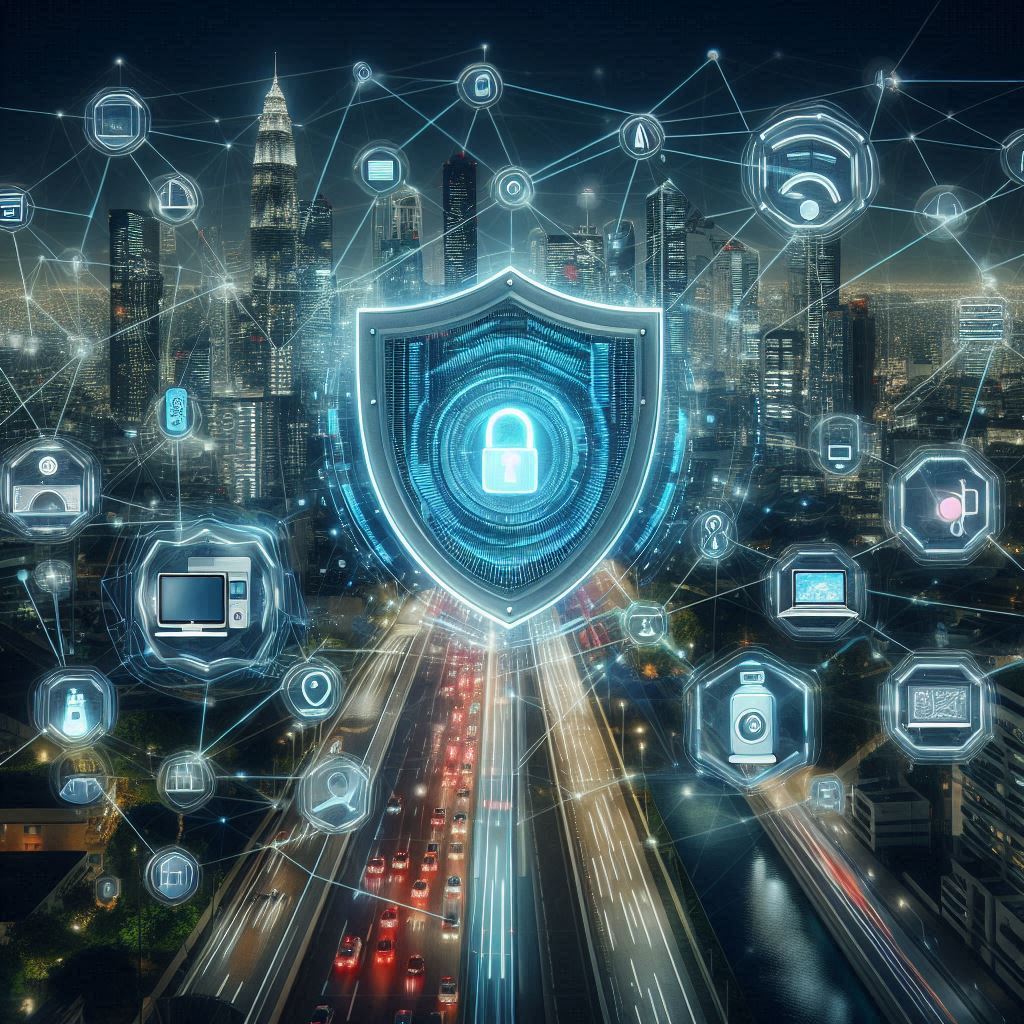In 2024, the Internet of Things (IoT) continues to transform industries and everyday life, driving efficiency and enabling data-driven decisions. However, alongside these opportunities come significant challenges that businesses and individuals must navigate to harness the full potential of IoT.
At Devoner, we specialize in helping businesses and startups tackle these IoT challenges by offering expert insights and tailored solutions. One of the most pressing issues in the IoT landscape is security. The proliferation of IoT devices has heightened the risk of unauthorized access, data breaches, and system vulnerabilities. Implementing best practices such as regular testing, software updates, and robust network security measures is essential to mitigate these risks.
In this article, we explore the critical IoT challenges of 2024, from data privacy concerns and lack of standardization to the complexities of interoperability and the ever-evolving cybersecurity threats. We provide actionable solutions that will equip you to deploy IoT solutions effectively and securely, ensuring their success in your projects and ventures.
Key IoT Challenges to Consider in 2024
1. Security Concerns
As IoT devices continue to multiply, they become increasingly attractive targets for cyberattacks. Protecting both devices and the data they collect is essential to prevent breaches. Specific security challenges include:
- Cyberattacks: IoT vulnerabilities invite malware, DDoS attacks, and unauthorized access.
- Data Theft: Hackers target sensitive IoT data, jeopardizing user privacy.
- Unpatched Vulnerabilities: Many IoT devices lack proper patching mechanisms.
- Privacy Issues: IoT’s vast data collection raises concerns over privacy and legal compliance.
- Network Security: Encryption, gateway protection, and access control are crucial.
Addressing these IoT security challenges is the first step in creating a robust and trustworthy IoT ecosystem, safeguarding sensitive data, and providing a secure environment for users and organizations.
2. Privacy Issues
Balancing data collection with user privacy is a significant challenge in the IoT landscape. Key concerns include:
- Data Sensitivity: Continuous personal data collection raises unauthorized access concerns.
- Compliance with Privacy Laws: IoT developers must navigate evolving global privacy laws.
- User Consent: Transparent interfaces are essential for informed consent on data usage.
- Data Processing Safeguards: Implementing firewalls, VPNs, and algorithms is crucial.
- Medical Device Vulnerabilities: IoT-enabled medical devices pose unique privacy challenges.
Effectively addressing these privacy challenges is essential to maintaining trust in the IoT ecosystem.
3. Interoperability
The diversity of IoT devices and communication protocols presents significant interoperability challenges:
- Diverse Ecosystem: IoT includes sensors, actuators, and smart appliances with varying designs.
- Varying Protocols: Proprietary protocols from different manufacturers hinder device communication.
- Standardization Efforts: Industry-wide protocols like MQTT and CoAP aim to solve this but need wider adoption.
- Legacy Systems: Older IoT devices complicate interoperability with newer technology.
- Security Concerns: Integrating devices from various sources can introduce vulnerabilities.
Solving these challenges requires collaboration among industry stakeholders and the adoption of open standards to create a seamless IoT ecosystem.
4. Scalability
As IoT devices proliferate, managing and scaling infrastructures becomes increasingly complex:
- Data Management: Handling the vast amounts of data generated by IoT devices demands scalable storage and processing solutions.
- Device Integration: Seamlessly integrating a diverse array of devices into existing networks while maintaining security becomes progressively intricate.
Investing in scalable infrastructure and processing power is essential to maintain real-time responsiveness and ensure the longevity of IoT deployments.
5. Data Management
Effective data management is critical to the success of IoT systems:
- Data Aggregation: Efficient collection and analysis of data are necessary to generate actionable insights.
- Data Storage: Scalable and secure storage solutions are essential to handle the vast amounts of data generated by IoT devices.
- Real-time Processing: Real-time data processing capabilities are crucial to maintaining the efficiency of IoT ecosystems.
Organizations must implement robust strategies for data management to address these challenges.
6. Regulatory Compliance
IoT systems must adhere to strict regulatory standards, such as GDPR:
- Data Handling: Ensuring compliance requires meticulous data handling, user consent, and privacy protection measures.
- Legal Mandates: IoT stakeholders must navigate complex legal landscapes and adapt their systems accordingly.
Integrating compliance considerations into IoT development is essential to avoid legal and financial ramifications.
7. Energy Efficiency
Enhancing energy efficiency is crucial for IoT devices that rely on battery power:
- Optimized Hardware: Designing IoT devices with low-power components and efficient power management is essential.
- Data Transmission: Efficient data transmission protocols reduce energy consumption.
- Edge Computing: Processing data locally at the edge reduces the energy required for data transmission.
- Energy-Harvesting Solutions: Implementing sustainable energy-harvesting technologies can prolong battery life.
- Machine Learning: Algorithms that optimize energy consumption in real-time can significantly reduce the environmental impact of IoT devices.
These strategies ensure that IoT devices operate longer on a single charge, reducing the need for frequent battery replacement and contributing to a greener IoT ecosystem.
8. Environmental Impact
IoT devices’ environmental impact is a growing concern:
- E-waste Generation: The rapid turnover of IoT devices contributes to increased electronic waste.
- Energy Consumption: IoT devices often operate 24/7, leading to continuous energy consumption.
- Resource Usage: The manufacturing process requires various resources, including rare minerals.
- Carbon Emissions: Energy-intensive data centers supporting IoT infrastructure contribute to carbon emissions.
Developing sustainable IoT solutions and focusing on long-term sustainability is essential to minimize the environmental impact.
9. Cost Constraints
Cost constraints remain a significant barrier to widespread IoT adoption:
- Device Manufacturing: The development of advanced IoT devices is often expensive.
- Connectivity Expenses: Maintaining reliable IoT connectivity, especially in remote areas, can be costly.
- Data Management: The surge in data volumes necessitates substantial investments in storage and cybersecurity.
- Upgrade and Maintenance: Continuous updates and maintenance add to the costs of IoT devices.
Overcoming these cost constraints requires innovative, cost-effective solutions and strategic planning.
10. Reliability and Resilience
Ensuring reliability and resilience in IoT systems is critical:
- Device Design: IoT devices must be designed for robustness and fault tolerance.
- Real-time Monitoring: Predictive maintenance and the ability to reroute data and operations are essential for resilience.
- Cybersecurity: Comprehensive security measures must be in place to safeguard IoT infrastructure.
Investing in reliability and resilience will be crucial as IoT applications expand across various industries.
Potential Solutions to IoT Challenges
Addressing the challenges of IoT requires proactive measures, including:
- Enhanced Security Measures: Implementing encryption, authentication, and regular audits to secure IoT networks.
- Standardization and Interoperability: Developing and adopting common protocols for seamless device integration.
- Data Privacy and Consent Management: Prioritizing data protection and transparent consent mechanisms.
- Edge Computing: Reducing latency and alleviating network congestion by processing data locally.
- Over-the-Air Updates: Implementing secure OTA mechanisms to keep IoT devices up-to-date.
- Energy-Efficient Designs: Prioritizing energy-efficient components and communication protocols.
- Robust Analytics and Machine Learning: Leveraging data to drive predictive maintenance and operational efficiency.
Key Takeaway
Understanding and addressing the challenges of IoT is crucial to the successful deployment of IoT solutions in 2024. By tackling security, privacy, scalability, data management, and more, businesses can ensure their IoT deployments are secure, efficient, and sustainable.


